Scientific books, lectures, notes, laboratory auxiliaries
Scientific books
Surface Treatment by Laser and Process Modeling
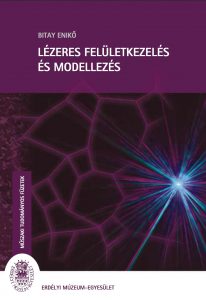 The development of structural materials and their technologies was conducted in the later years on existing theoretical and practical knowledge but nevertheless mostly on a basis of trial and error. The task of the not-so-distant future will be to develop procedures (simulation techniques) by means of which we will be capable to determine the structure of a given material by specifying the settings of a parameter of technology (e.g. surface treatment with laser) without having to resort to costly experiments of great volume.
The development of structural materials and their technologies was conducted in the later years on existing theoretical and practical knowledge but nevertheless mostly on a basis of trial and error. The task of the not-so-distant future will be to develop procedures (simulation techniques) by means of which we will be capable to determine the structure of a given material by specifying the settings of a parameter of technology (e.g. surface treatment with laser) without having to resort to costly experiments of great volume.
By presenting the theoretical and practical side of technologies pertaining to surface treatment by laser, also their simulation techniques and complex mathematical side, this volume wishes to contribute to this task.
DOI: https://doi.org/10.36242/mtf-04
The full text is also available here: http://eda.eme.ro/handle/10598/8923.
——————————————————————————————————————————-
Introduction to the Informatics of Material Technologies
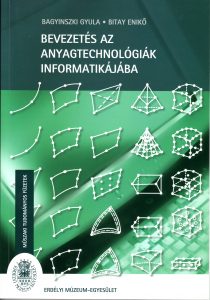 Besides construction measurements and design, choosing materials and corresponding technological planning are basic tasks of engineering work. Nowadays these too cannot be performed without the use of appropriate databases and software. In order to understand these correctly and implement them effectively we need such background knowledge in material technologies that refer to available and appropriate materials, their characteristics, also ways to conduct analysis that can quantify these, numeric methods, production procedures, characteristics of processes and their description.
Besides construction measurements and design, choosing materials and corresponding technological planning are basic tasks of engineering work. Nowadays these too cannot be performed without the use of appropriate databases and software. In order to understand these correctly and implement them effectively we need such background knowledge in material technologies that refer to available and appropriate materials, their characteristics, also ways to conduct analysis that can quantify these, numeric methods, production procedures, characteristics of processes and their description.
This book deals with the summary and detailing of these topics from an informatician point of view.
DOI: https://doi.org/10.36242/mtf-03
The full text is also available here: http://eda.eme.ro/handle/10598/8942.
——————————————————————————————————————————-
Surface Treatment
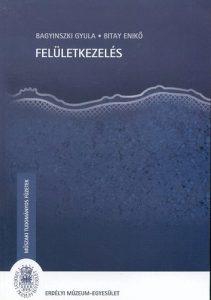 By surface treatment we can create surface layers, crusts that can increase resistance to damage (to abrasion, tempering, corrosion, oxidation and fatigue) on otherwise – in lack of other requirements or demands – cheaper materials (work pieces) that are tougher and easier to process. Certain regions of the work pieces can be adjusted to specific local needs without significant changes in structure and characteristics in the greater part of their volume.
By surface treatment we can create surface layers, crusts that can increase resistance to damage (to abrasion, tempering, corrosion, oxidation and fatigue) on otherwise – in lack of other requirements or demands – cheaper materials (work pieces) that are tougher and easier to process. Certain regions of the work pieces can be adjusted to specific local needs without significant changes in structure and characteristics in the greater part of their volume.
Besides presenting different surface treatment procedures based on different principles, this book also deals with those forms of damage that can require such treatments, some important characteristics of material surfaces, the methods by which a surface can be prepared and also with analysis pertaining to the qualifying of surfaces.
DOI: https://doi.org/10.36242/mtf-05
The full text is also available here: http://eda.eme.ro/handle/10598/15436.
——————————————————————————————————————————-
Welding Techniques I. Procedures and Mechanizing
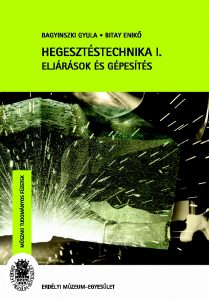 Welding is the most important joining technology, a fact that is reflected also in the great variety of different procedures, the wide array of filler- and auxiliary materials that have been developed accordingly and also in the many possibilites for mechanization.
Welding is the most important joining technology, a fact that is reflected also in the great variety of different procedures, the wide array of filler- and auxiliary materials that have been developed accordingly and also in the many possibilites for mechanization.
These together form a basis of welding techniques that can serve both the builder, the technologist and the manager. In order to contribute to a proper foundation for the building work this book provides a systematic and concise view on the aforementioned topics. It’s aim is to summarize such theoretical and practical knowledge that can support and develop the background knowledge of all those who have some connection with welding.
It tries to present to its readers in a compact yet encyclopedic form information about specific fields concerning welding, related procedures and possibilities for mechanization – that can simply be called technical background.
DOI: https://doi.org/10.36242/mtf-08
The full text is also available here: http://eda.eme.ro/handle/10598/15437.
——————————————————————————————————————————-
Welding Techniques II. Equipment and Measurements.
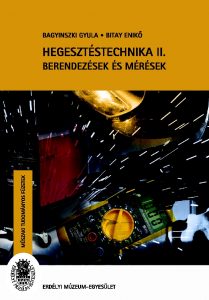 Electric welding equipment are the fundamental condition of their pertaining welding procedures therefore knowledge of their basic principle, build and workings is important. Furthermore, in order to effectively use the possibilities of these equipment it is recommended that we are aware of their functional characteristics: possibilities for settings and intervention, limits, effects on the working environment. According to this we also have to pay attention to related measurements, solutions for techniques of control, while not forgetting about the dangers that come with the use of electricity and ways to prevent them.
Electric welding equipment are the fundamental condition of their pertaining welding procedures therefore knowledge of their basic principle, build and workings is important. Furthermore, in order to effectively use the possibilities of these equipment it is recommended that we are aware of their functional characteristics: possibilities for settings and intervention, limits, effects on the working environment. According to this we also have to pay attention to related measurements, solutions for techniques of control, while not forgetting about the dangers that come with the use of electricity and ways to prevent them.
This book focuses mostly on arc welding and resistance welding, the principial and practical background and working characteristics of applicable equipment and tools, also with related measurement, control and safety issues. It wishes to provide a survey of the aforementioned specific fields of welding without claiming to be exhaustive but with the aim to support and develop the background knowledge of all those who have some connection with welding.
It tries to present to its readers information about specific fields concerning welding – equipment and their pertaining measurement, control and safety issues – that are simply part of the background in welding techniques – in a concise way and focusing on the essentials.
DOI: https://doi.org/10.36242/mtf-09
The full text is also available here: http://eda.eme.ro/handle/10598/15438.
——————————————————————————————————————————-
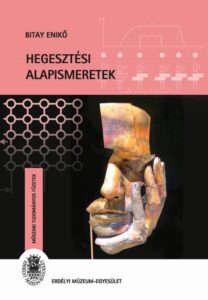 Basics of Weiding. Hegesztési alapismeretek
Basics of Weiding. Hegesztési alapismeretek
Welding is the most important technology for the joining of industrial materials.
This can be seen in the multitude of procedures, corresponding welding materials and the extensive standardization and possibilities for mechanization and automation in this field. This book presents the fundamental concepts in welding and related procedures including soldering, brazing, bounding and thermal cutting. Its purpose is to offer an aid for the assimilation of knowledge in the field of materials technology and to facilitate in-depth study of welding.
With this book it is intended that the reader will gain knowledge of the most commonly applied welding and related procedures and will acquire detailed knowledge of the large diversity of welding principles, methods and application areas. As such, it should prove to be an excellent aid for specialist study.
There are ten chapters after which an annex of welding terms in Hungarian, Romanian, English, and German is given. There is also a dictionary of technical terms supplemented with a bibliography containing 31 titles. The glossary that closes this book serves to further consolidate an understanding of the manifold concepts and ideas addressed in the text. The presentation is enhanced by 109 colour figures and photos.
The first chapter presents the basic notions related to non-demountable assemblies. It gives clear definitions and highlights the differences between welding and soldering procedures. Regarding welding procedures, fusion welding and pressure welding are discussed in separate subsections. Chapter two gives a detailed presentation of precision welding procedures. The first subsection presents the taxonomy of these procedures while the following subsections provide a detailed description of each procedure.
Although the chapter title specifies „The most important”, some specific procedures such as explosion welding or magnetic impulse welding are also presented.
Chapter three deals with fusion welding procedures: starting with the classical procedures and how they are evolving into the specialized ones. The author explains in the smallest detail seven arc welding procedures, and subsequently flame welding. This chapter ends with the non-conventional welding procedures such as electron beam welding, laser welding, and alumino-thermic welding. Chapter four provides a detailed synthesis of welding materials. The focus of the presentation is on coated welding rods and structures in three subsections.
The remaining two subsections deal with the protecting gases and the gases of flame welding.
Chapter five presents the soldering technologies. This chapter is divided in two subsections. The first describes soldering while the next deals with brazing procedures. Chapter six presents braze welding while chapter seven some specific bonding procedures. Chapter eight is dedicated to describing the three thermal separation procedures: flame cutting, plasma jet cutting and laser cutting.
The last two chapters can be considered as complementary: they present the historical framework of the development of welding, and welding as a tool of artistic expression. Finally, it can be stated that this book provides basic knowledge in the field of materials technology, through theoretical and practical examples, complemented by figures and photos. It makes more expressive, understandable and attractive this – maybe the most exciting – field of mechanical engineering.
——————————————————————————————————————————-
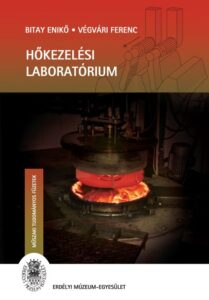 Heat treatment Laboratory. Hőkezelési laboratórium
Heat treatment Laboratory. Hőkezelési laboratórium
Heat treatment is a technology developed for modifying the mechanical properties of pure metals or alloys according to specific requirements. Heat treatment is indispensable – as proven by the large number of procedures, the extended standard support and the possibilities for mechanization or automation.
This book presents a basic knowledge of heat treatment with the purpose of assisting mechanical designers in their decisions regarding the requirements of material quality, and supports the assimilation of knowledge relating to materials technology. It is also a valuable asset for raising interest in a more thorough investigation of this scientific field.
This book summarizes the fundamental theory and main practical applications of heat treatment. It is divided in two parts: the first presents – in a concise and purposeful way – the theoretical foundation, while the second describes seven experiments perfectly suited for laboratory classes of the discipline of „Heat Treatment”. It may also be used effectively in a science class setting.
The first part containing the theoretical fundaments is divided in six chapters: Chapter one deals with the general theory of heat treatment. This is based on the principle and accompanying physical phenomena of heat treatment – heat transfer and the heat treatment cycle (heating, soaking, cooling) are presented in detail here.
Chapter two builds on the previously presented theoretical notions as procedures and procedure groups. This way the reader gains a synthesis on the processes in relation to the material and the desired mechanical properties.
Chapter three provides a reminder of the Fe-C/ Fe–Fe3C phase diagrams.
Chapter four gives a full description of the heat treatment of iron alloys. This chapter is divided into four sections. The first deals with the through hardening and the associated preparative procedures. Section two presents the different types of surface hardening. Section three deals with the thermo-chemical processes, while last section presents heat treatment procedures for cast iron.
Chapter five is divided into two sections, the first describing the recrystallization of cold forged aluminum and its alloys, the second the N separation.
Chapter six closes the theoretical part and refers to the heat treatment of copper and its alloys. It is divided into three sections. Section one deals with the treatment of pure copper, section two with the monophasic copper alloys, and section three the polyphasic copper alloys.
The second part of the book presents seven laboratory works: austenitisation, determination of austenite grain size, conditions of through hardening, isothermal transformations, continuous cooling, annealing and the annealing by recrystallization of aluminum and its alloys.
The book ends with an appendix – in Hungarian, Romanian, English and German – containing the key technical terms used here.
In conclusion, this book provides a basic knowledge in the field of heat treatment for anyone working – or intending to work – in mechanical design or materials technology. The information given is further supported by figures and illustrations to produce a more attractive and accessible text in this very exciting and important field of science.
The full text is also available here: https://eda.eme.ro/handle/10598/33531
——————————————————————————————————————————-
Laboratory auxiliary
Material Science Laboratory I. Investigations to Establish Properties of Materials
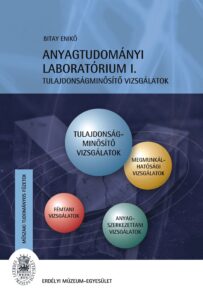 The teaching of the Science of Materials is an important section of any university or college level technical education. Practical work in the lab or in the classroom allows the students to become more familiar with the structural materials presented during the courses.
The teaching of the Science of Materials is an important section of any university or college level technical education. Practical work in the lab or in the classroom allows the students to become more familiar with the structural materials presented during the courses.
During these lab practices it is recommendable that one focuses on the components of these materials, their structure, available choices, the physical characteristics that serve as a foundation for construction planning, the options for technological processing and also their resistance to damage while in use and the possibilities and methods that allow the measuring, quantifying and controlling these – in other words the qualifying of materials.
This educationally oriented book – as a first volume in a series about laboratories in Science of Materials – is concerned with analysis that qualify the characteristics of structural materials and related mathematical problems. A special attention is given to the methods by which one can determine the standardized characteristics of materials – solidity, hardness, impact test – also the fundamentals of fracture mechanisms, and the mathematical analysis of dislocation and fatigue. Additionally the simple solutions for material identification are also presented.
DOI: https://doi.org/10.36242/mtf-11
The full text is also available here: https://eda.eme.ro/handle/10598/31517
——————————————————————————————————————————-
Lecture notes
The Metallurgical Fundamentals of Welding, Soldering and Thermal Cutting (lecture notes)
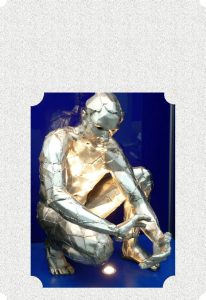 Forge welding is a manufacturing process that is almost as old as the use of iron itself (“iron age”) and up until the middle of the 19th century it was the only technique that could join together metals in a non-disassemblable way. The quick and spectacular development of material technologies and among them that of welding occurred in the 19th and 20th century a fact explained by the discovery of electricity, its means and its widespread use.
Forge welding is a manufacturing process that is almost as old as the use of iron itself (“iron age”) and up until the middle of the 19th century it was the only technique that could join together metals in a non-disassemblable way. The quick and spectacular development of material technologies and among them that of welding occurred in the 19th and 20th century a fact explained by the discovery of electricity, its means and its widespread use.
Welding in the industry is the most important technology for joining metals together, a fact reflected in the great number of procedure versions, the wide variety of auxiliary materials developed for them and the many possibilities of mechanizing and automation.
The aim of this booklet is to aid – by presenting the fundamental processes of welding – the absorption of knowledge in the field of Metallurgy and to stir interest towards a more profound study of the field of engineering in material technologies which is one of the most exciting directions within machine engineering.
The full text is available here: https://hu.scribd.com/doc/229730688/FemekTechnologiaja-Hegesztes#scribd.
——————————————————————————————————————————-
The description of taught courses, lectures, laboratories (continually uploaded as it follows the curriculum – 1st semester)
Taught courses
- Engineering Material Science I. – Mechatronics majors and Mechanical engineering majors, 1st year
- Engineering Material Science II. (Engineering Material Technologies) – Mechatronics majors and Mechanical engineering majors, 2nd year
- Modern Material Science – Mechatronics majors and Mechanical engineering majors 4th year
- Fundamentals of Mechanical Engineering – Automatization and applied informatics majors – 1st year.